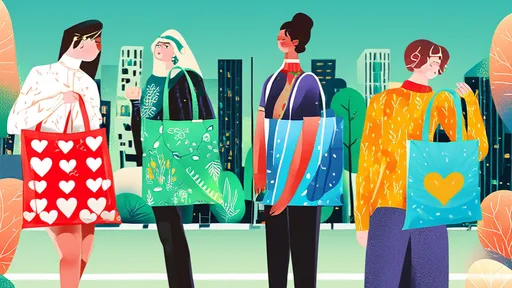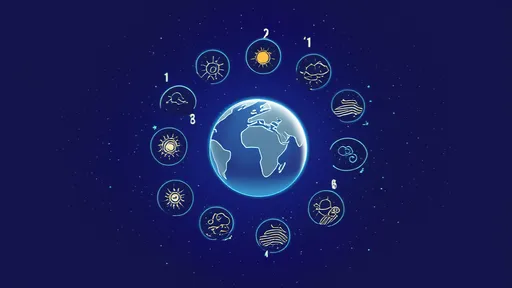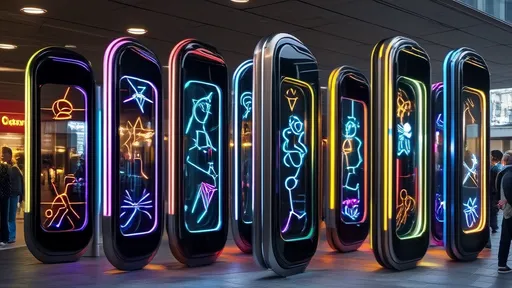The concept of patience varies dramatically across cultures, and nowhere is this more evident than in the simple act of standing in line. A recent global study has attempted to rank nations based on what researchers call "queue tolerance"—the ability to wait calmly without frustration. The findings reveal fascinating insights into how different societies approach the universal experience of waiting.
The Cultural Psychology of Queuing
In countries like Japan and the UK, queuing is practically an art form. There's an unspoken social contract that dictates orderly lines and quiet resignation. The study found Tokyo commuters will form perfectly straight lines for trains without any visible signage or queue monitors. British respondents reported feeling a sense of civic pride in "queuing properly," with many admitting they'd rather join a long, orderly line than navigate a chaotic free-for-all, even if the latter might be faster.
Scandinavian nations also scored remarkably high, though their approach differs. Danes and Swedes maintain what researchers called "comfortable isolation" in queues—precisely spaced apart without appearing standoffish. This contrasts sharply with Mediterranean and Latin American cultures where the line often functions more as a loose gathering. In Rome or Rio, what looks like crowd chaos to outsiders follows its own internal logic where regulars know whose turn it is through subtle social cues.
The Economic Impact of Impatience
Queue tolerance has measurable economic consequences. The study correlated national queue temperament with productivity losses from abandoned transactions. In countries ranking low on patience, businesses lose significant revenue from customers walking away when faced with waits exceeding their cultural tolerance threshold. American retailers reported the highest percentage of "walk-offs" at just 3.5 minutes of waiting, while Japanese shops rarely see customers abandon queues regardless of duration.
Transportation systems also reflect these differences. London Underground officials note their passengers will queue patiently for up to 27 minutes during disruptions before frustration sets in—a figure that made researchers blink. Comparable data from New York showed commuters reaching peak irritation in under 90 seconds when subway delays occur. This has led some multinational corporations to develop location-specific queue management strategies, with more staff deployed to manage lines in low-tolerance regions.
The Unexpected Champions
While predictable leaders like Japan and Britain topped the rankings, several surprise contenders emerged. Vietnam's score defied expectations, with researchers observing remarkably patient queues at government offices where waits often exceed two hours. Closer examination revealed an entire ecosystem of makeshift seating, food vendors, and social bonding that transforms waiting into a communal experience rather than an individual burden.
Perhaps most surprisingly, Rwanda ranked in the top 15—a fact researchers attribute to post-genocide social restructuring. Community service initiatives like Umuganda (monthly neighborhood cleanups) have fostered collective patience as a civic virtue. Kigali's impeccably clean streets and orderly queues at bus stops now serve as case studies in rapid cultural transformation regarding public space etiquette.
Technology's Double-Edged Sword
Digital queue solutions have uneven adoption globally. South Korea's virtual queuing apps enjoy near-universal usage, allowing people to "hold their place" remotely while shopping or dining nearby. However, in Spain and Greece, attempts to implement similar systems often fail as patrons prefer to physically secure their position—a cultural preference for visible fairness over technological convenience.
The study uncovered an ironic twist: societies with the highest queue tolerance are often those where digital alternatives work best. Researchers hypothesize that populations accustomed to orderly waiting transfer those expectations to digital systems, while cultures comfortable with fluid, social queue management struggle to adapt to rigid virtual queues. This presents challenges for global retailers and service providers attempting standardized customer flow solutions across borders.
As our world becomes increasingly interconnected, understanding these national differences in queue behavior grows more crucial—not just for businesses optimizing customer experience, but for anyone seeking to comprehend the subtle fabric of cultural psychology that weaves through our daily lives. The next time you find yourself tapping your foot in line, remember: your irritation (or lack thereof) might say more about your cultural programming than the actual wait time.

By /Jul 28, 2025

By /Jul 28, 2025

By /Jul 28, 2025

By /Jul 28, 2025

By /Jul 28, 2025

By /Jul 28, 2025

By /Jul 28, 2025

By /Jul 28, 2025

By /Jul 28, 2025

By /Jul 28, 2025

By /Jul 28, 2025

By /Jul 28, 2025

By /Jul 28, 2025

By /Jul 28, 2025

By /Jul 28, 2025

By /Jul 28, 2025

By /Jul 28, 2025

By /Jul 28, 2025